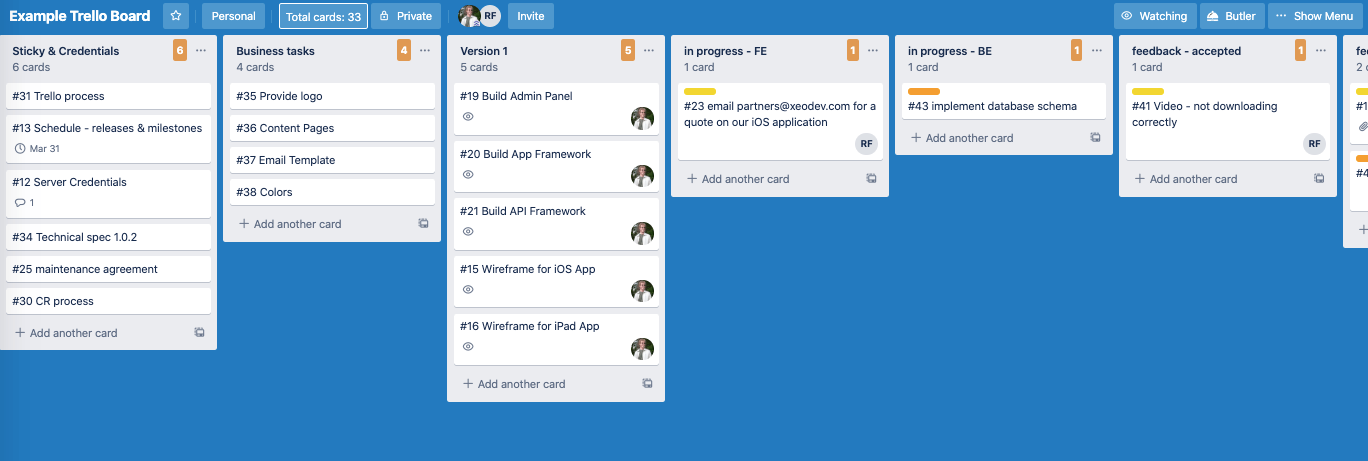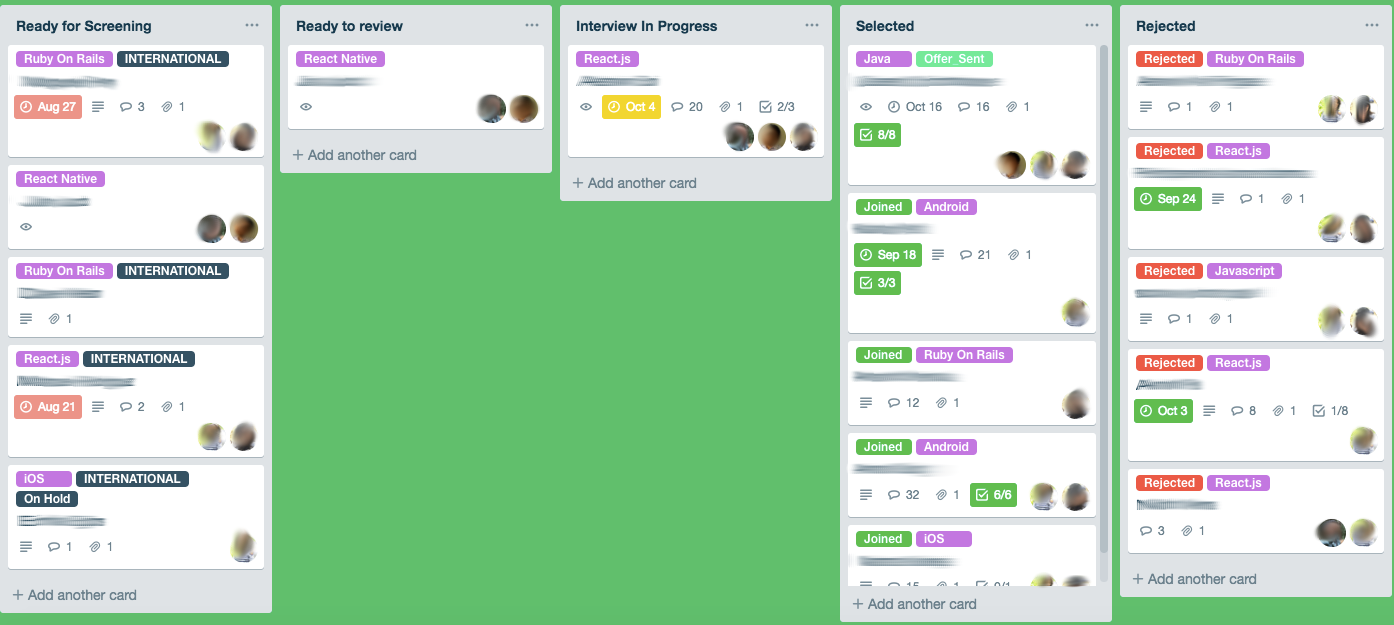

Or, you could organize them based on priority, as in the example below:įor all you bloggers out there, I use the drag-and-drop feature to track blog post ideas and progress. For your day-to-day list items, you might keep different lists for projects assigned to you by different clients. Why? Because it lets you drag, drop, color-code, and manipulate to-do list items in a way that many of the other tools don’t. If you tend to be a more visual person, Trello could be a great choice for you. There are a lot of great tools out there to help you manage your personal to-do list. 8 Creative Ways to Manage Your Tasks & Projects Using Trello Boards 1) Organize Your Personal To-Do List

(To learn more about Trello’s capabilities, you can take the tour here.)įor now, let’s move on to some different ways you can structure your Trello board.
#TRELLO BOARD EXAMPLES FREE#
Once you click into one of those cards, you can label them, add a due date, add “members” to the card to assign tasks, and so on.Īnother great feature? The calendar. If you enable the free calendar “power-up” (much like Labs in Gmail), then you’ll be able to assign everything in a calendar view that makes organizing due dates much easier. While boards can be organized in many ways, here’s an example of what one looks like: Then, within each of these cards, you can jot notes, assign them to others, organize them into categories or lists, create task lists and checklists within cards, color-code them, attach files … the list goes on. Using their card-based layout, you can create a card for every idea, blog posts, piece of a project, and so on. Trello is a well-known app that’s especially good for tracking and visualizing progress. That’s why we’ve rounded up eight useful ways to organize your Trello board. There are a ton of different ways you and your team can use Trello for work, and what works for you may not work for others, and vice versa. It’s worked very well for us, and we want to share the love. And why shouldn’t we? Here at HubSpot, all different teams have used it for years for everything from project management to our blog’s editorial calendar. We’ve talked about Trello before, like in this post on tools to help you organize, develop, and share your ideas (see #3). Instead, it’s the other related tasks - brainstorming, scheduling, and coordinating moving parts - that wind up causing us stress. Similarly with Jira time zone post.Often times, the greatest challenge marketers face when creating content isn’t the actual writing, publishing, or promoting. I searched for a similar posts, like this one: Issues with a Sprint START and END date that provide some explanation, but it doesn't really solves it.

I also tested using Automation that when I try to assign the sprint date to another date field, it is also showing the next day. Here Jira Advanced Roadmaps showing the dates shifted Is it a bug?, because at the end it is confusing, because it shows one day in the sprint information view, but at the end is a different day.Is it correct my assumption that the time zone for sprint is always UTC-0 regardless of the Jira instance time zone settings or board settings? Do I need to put the dates and time always assuming UTC-0?, but then it will show the wrong information in the backlog view in case there is date shift between my time zone and UTC-0.Is there any Jira Instance or Project settings specific configuration to control this?.When you setup sprint start and end dates you don't have the option to specify time zone, I assumed my board or personal setting, but it is not working like that. I talked to my Jira Admin and our Jira instance is configured to CST (UTC-6) via the field: Default user time zone, so it is not taking that time zone neither. So internally the date is stored in UTC-0 (Greenwich Mean Time (GMT)). I did several test and I realized that for 6:59 PM it doesn't change. For example if I set the sprint end date to 12:59 PM, then in Jira Advanced Roadmap (in my configuration I use target dates), then when that information is missing, it takes the dates from the sprint, and it is shifted by one day. I have my board time zone set to EST (UTC-5) and when I define the sprint dates I assume it will be in the same time zone, but it is not.


 0 kommentar(er)
0 kommentar(er)
